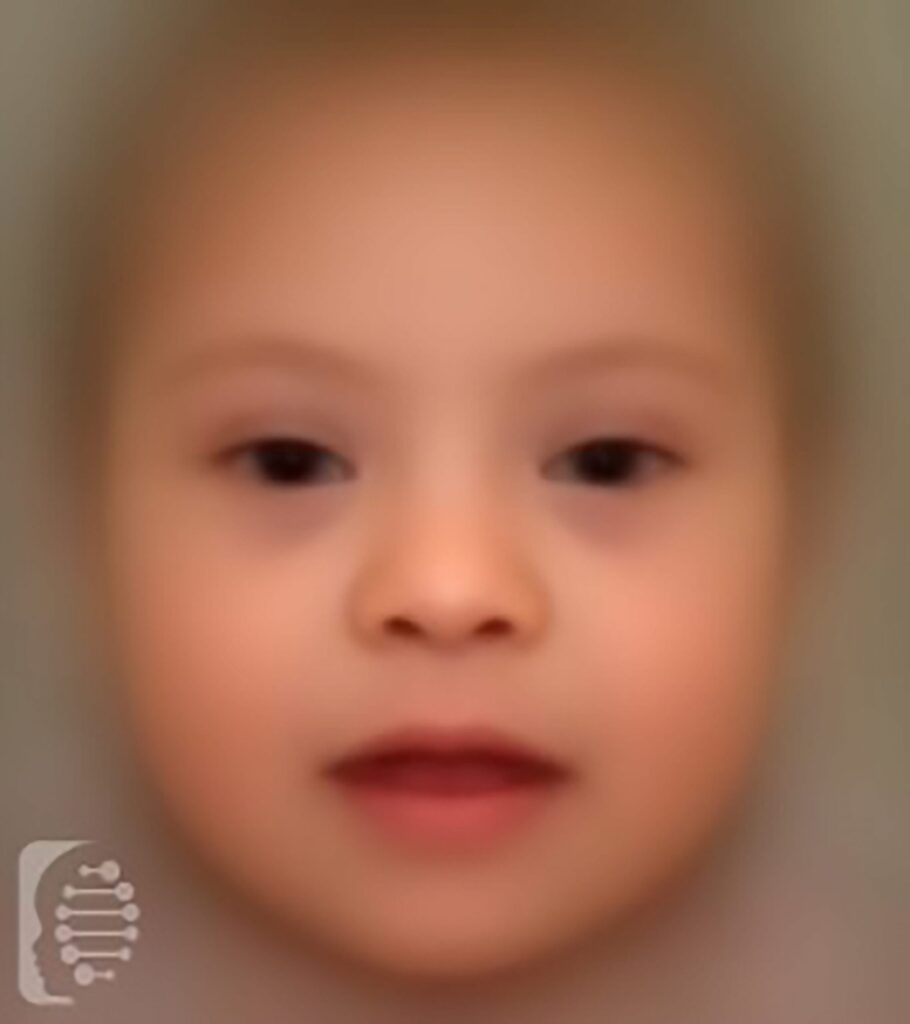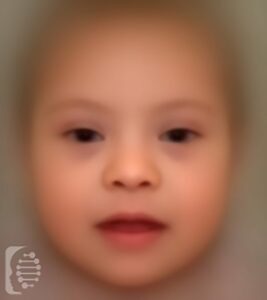What is Down syndrome?
Down syndrome is one of the most common genetic conditions, and approximately 1 in every 700 babies born in the US is born with this syndrome.
Maternal age is believed to be a significant risk factor for developing oocytes with extra chromosome 21; although more Down syndrome babies are born to younger mothers, that is simply because the birth rate amongst younger mothers is higher.
Health conditions associated with this syndrome include hypotonia, heart and thyroid disease, physical growth delays, mild to moderate intellectual delays and disorders, and very characteristic facial features.
Hypotonia (low muscle tone), flat facies, up-slanted palpebral fissures, developmental delay, and single palm crease are some of the most frequent Down syndrome characteristics.
Syndrome Synonyms:
Down syndrome, Trisomy 21
What gene change causes this Syndrome?
Down syndrome is a genetic disorder. It is caused by the addition of a full or partial copy of chromosome 21. The syndrome is also often referred to as Trisomy 21. 95% of individuals diagnosed with this syndrome present with Trisomy 21 which is the most common form of the genetic condition. 3% of individuals diagnosed will have some type of translocation, and the remaining 2% will present with mosaic Down syndrome (some cells have trisomy 21, some cells do not). There is no hereditary element to Trisomy 21 and mosaicism. ⅓ of cases of this syndrome resulting from translocation have a hereditary component, accounting for around 1% of all the syndrome cases.
What are the main symptoms of Down Syndrome?
The main symptoms of Down syndrome include characteristic facial features such as a flattened face, especially across the bridge of the nose, almond-shaped eyes, a short neck, small ears, and poor muscle tone.
Congenital heart defects are a major symptom of this syndrome, and other health conditions can include hearing loss, obstructive sleep apnea, ear infections, and eye diseases.
Individuals with this syndrome may be diagnosed with an intellectual or cognitive disability and developmental delays.
Possible clinical traits/features:
The short middle phalanx of the 5th finger, Hypothyroidism, Short stature, Hypoplastic iliac wing, Epicanthus, Malar flattening, Conductive hearing impairment, Duodenal stenosis, Complete atrioventricular canal defect, Microtia, Muscular hypotonia, Myeloproliferative disorder, Intellectual disability, Macroglossia, Joint laxity, Upslanted palpebral fissure, Flat face, Protruding tongue, Short palm, Sporadic, Shallow acetabular fossae, Anal atresia, Alzheimer disease, Aganglionic megacolon, Acute megakaryocytic leukemia, Atlantoaxial instability, Brachycephaly, Broad palm, Brushfield spots, Thickened nuchal skin fold, Single transverse palmar crease.
How is it diagnosed?
Clinical consultation with a genetic professional is necessary for diagnostic purposes and different options for genetic testing, prenatally and postnatally.
Prenatally screens estimate the chances of the fetus having this syndrome while diagnostic testing can provide a definitive diagnosis with a very high rate of accuracy.
To find out if someone has a diagnosis of Down syndrome, it is important to have a consultation and evaluation with a clinical genetic specialist. Specialists may also suggest specific genetic testing or other types of tests to help reach a diagnosis. FDNA’s AI technology can help speed up the diagnostic process by analyzing facial features and other health information.


